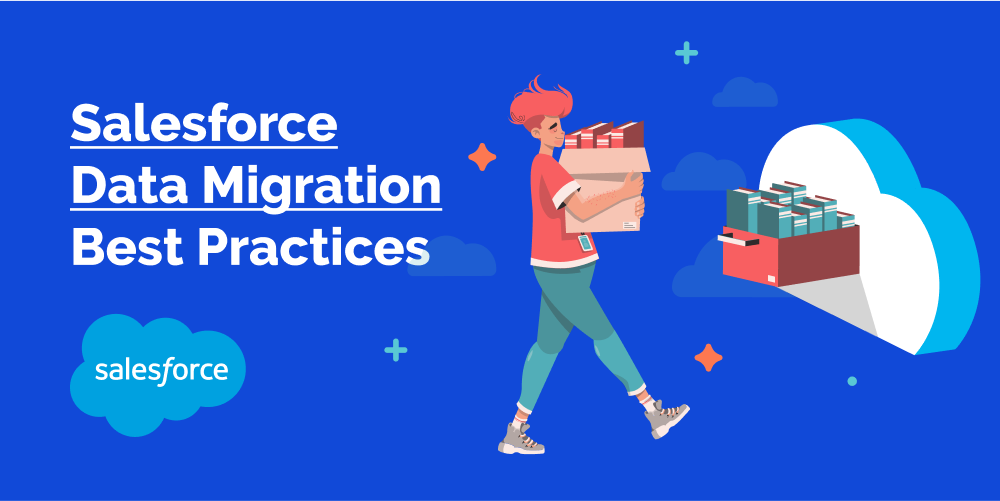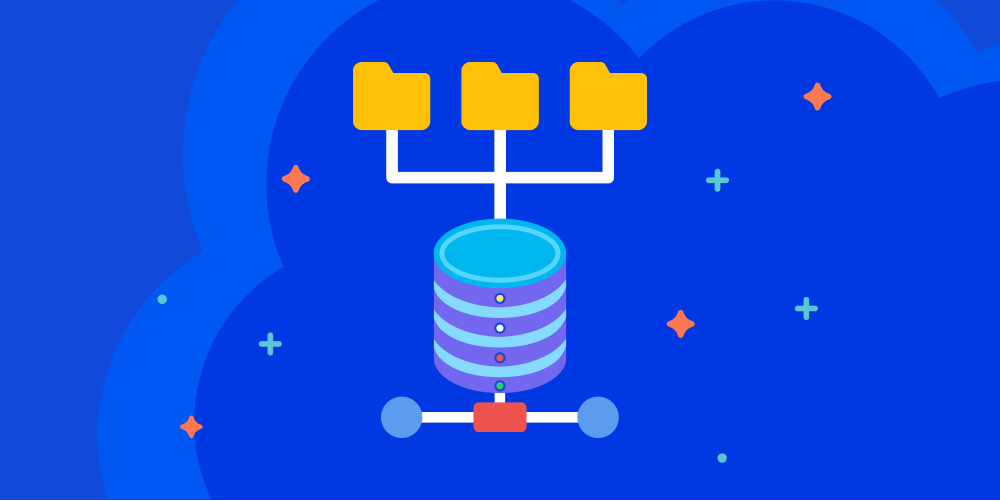Technology, zBlog
Mastering Salesforce Data Migration: Proven Best Practices
trantorindia | Updated: September 14, 2023

Introduction
In today’s fast-paced business environment, the ability to seamlessly transfer data from one system to another is crucial for maintaining efficiency and staying competitive. Salesforce is widely used by businesses to manage customer relationships, sales, and marketing activities. However, as organizations grow and evolve, the need to migrate data within Salesforce or from other systems to Salesforce becomes inevitable. To ensure a successful data migration project, it’s essential to follow best practices that guarantee data accuracy, security, and minimal disruptions. This article serves as your comprehensive roadmap to Salesforce data migration, unveiling the best practices you need to know.
Understanding the Importance of Data Migration

Data migration is more than just a technical process; it’s a strategic initiative that impacts your entire organization. It involves moving data from legacy systems or previous versions of Salesforce to the latest Salesforce instance. Data is the lifeblood of your business, and any mishandling during migration can have far-reaching consequences, including data loss, decreased productivity, and customer dissatisfaction. To ensure a seamless and successful Salesforce data migration, explore our expertise in Salesforce Sales Cloud services.
Industry Data Point:
According to a recent study by Gartner, data migration projects are expected to increase by 45% over the next two years as more businesses adopt cloud-based CRM solutions like Salesforce. This highlights the growing importance of effective data migration strategies.
Assessing Your Data

Before embarking on a data migration project, conduct a thorough assessment of your data. Identify what data needs to be migrated, what can be archived, and what should be discarded. This step is crucial for minimizing the volume of data you transfer and ensuring that you focus on the most critical information.
Real-Life Use Case:
A multinational conglomerate embarked on a Salesforce data migration journey to consolidate customer data from various regional databases. Their data assessment revealed redundant customer records across divisions, enabling them to reduce data storage costs by 20% and improve data accuracy.
Selecting the Right Data Migration Method

There are various methods for data migration, such as manual data entry, data loader tools, and API-based migrations. Choosing the right method depends on factors like data volume, complexity, and your organization’s specific needs. Consider seeking expert advice if you’re unsure which method suits your situation best.
Industry Data Point:
In a survey conducted by Salesforce, it was found that 68% of organizations prefer using data loader tools for their Salesforce data migration. This method is favored for its reliability and ease of use.
Data Cleansing and Transformation

Before migrating data, clean and transform it to ensure accuracy and consistency. This step involves removing duplicates, standardizing data formats, and resolving inconsistencies. Clean data lays the foundation for a successful migration.
Real-Life Use Case:
A financial services provider discovered that their client contact data was riddled with duplicates and outdated information. By implementing a data cleansing process, they not only improved data accuracy but also enhanced their customer interactions, resulting in a 15% increase in customer satisfaction.
Creating a Data Migration Plan

A well-defined data migration plan outlines the entire migration process, including timelines, responsibilities, and milestones. It’s a roadmap that keeps your project on track and ensures that everyone involved is on the same page.
Real-Life Use Case:
Tech Innovators Inc., a software solutions provider, created a detailed data migration plan when transitioning from an on-premises CRM to Salesforce. This plan helped them allocate resources effectively and meet their migration deadline, resulting in a seamless transition with minimal disruption to their sales operations.
Data Mapping and Source Identification

Map your data to its source and destination within Salesforce. This mapping ensures that data ends up in the correct fields and objects. It’s essential for maintaining data integrity throughout the migration.
Industry Data Point:
According to a report by Deloitte, organizations that prioritize data mapping and source identification experience a 30% reduction in post-migration data errors, leading to improved decision-making and customer satisfaction.
Choosing the Right Tools

Selecting the appropriate migration tools can significantly impact the efficiency and success of your project. Salesforce provides a range of data migration tools, each with its own strengths. Evaluate these tools to find the best fit for your project.
Real-Life Use Case:
Global Solutions Ltd., a software development firm, leveraged Salesforce’s Data Import Wizard to migrate their lead and opportunity data. The user-friendly interface of the tool allowed their team to complete the migration swiftly, saving valuable time and resources.
Data Testing and Validation

Testing is a critical phase of data migration. Before moving data to its new home, validate that it meets the desired quality standards. Testing helps identify and rectify any issues before they affect your operations.
Industry Data Point:
In a study by the Aberdeen Group, it was found that companies that perform comprehensive data testing during migration experience a 20% higher success rate in their projects, resulting in reduced project costs and improved ROI.
Data Migration Execution

With your plan in place and testing complete, it’s time to execute the migration. Ensure that your team follows the plan meticulously and monitors the process closely to address any unexpected challenges.
Real-Life Use Case:
E-commerce giant E-Shop Pro executed a data migration during their busiest season, ensuring a smooth transition for their millions of customers. Their meticulous planning and dedicated team led to a successful migration with no interruption in service and a 10% increase in customer retention.
Monitoring and Troubleshooting

Throughout the migration, keep a close eye on the process. Monitor for errors or delays, and be prepared to troubleshoot issues promptly. A proactive approach can prevent minor hiccups from becoming major roadblocks.
Industry Data Point:
According to a survey by TechRepublic, 87% of organizations that proactively monitor their data migration projects report fewer delays and reduced downtime, leading to increased customer satisfaction and business continuity.
Post-Migration Validation

Once the migration is complete, validate the data again to ensure that nothing was lost or corrupted during the process. This step provides peace of mind that your data is intact and accessible.
Real-Life Use Case:
Healthcare provider HealthLink Hospital performed post-migration validation and discovered a minor data discrepancy. Prompt action ensured that patient records remained accurate and secure, preserving patient trust and satisfaction.
User Training and Adoption

Train your team on how to use the newly migrated data effectively. Ensure that they understand the changes and can navigate the Salesforce platform with confidence.
Data Backup and Disaster Recovery

Data security should be a top priority. Implement robust backup and disaster recovery procedures to safeguard your data in the event of unexpected events.
Real-Life Use Case:
FinTech startup SecureFin implemented a data backup strategy during their migration. When a server outage occurred, they were able to restore data quickly, minimizing downtime and ensuring data integrity.
Documentation and Reporting

Maintain comprehensive documentation of your data migration process. This documentation helps with auditing, compliance, and future reference.
Industry Data Point:
A report by IDC indicates that businesses with well-documented data migration processes are 35% more likely to meet compliance requirements, reducing legal and financial risks.
Continuous Data Quality Maintenance

Data quality is an ongoing concern. Implement processes and tools to maintain data quality in the long term, preventing issues from recurring. For a comprehensive solution, consider leveraging Salesforce Einstein Services, which can provide advanced data analytics and automation to proactively address data quality challenges and ensure sustained excellence.
Real-Life Use Case:
Retailer MegaMart uses data quality maintenance tools to regularly clean and enrich its customer data. This practice ensures that marketing campaigns are targeted and effective, resulting in a 12% increase in sales revenue.
FAQs
- Q: What is data migration in Salesforce?
Data migration in Salesforce is the process of moving data from one Salesforce instance or another system into Salesforce while preserving data accuracy and integrity. - Q: Why is data cleansing important in data migration?
Data cleansing is crucial in data migration to ensure that the data being transferred is accurate, consistent, and free from duplicates or errors. - Q: How long does a typical Salesforce data migration take?
The duration of a Salesforce data migration project can vary widely depending on factors such as data volume, complexity, and the chosen migration method. It can range from several weeks to several months. - Q: What are the common challenges in Salesforce data migration?
Common challenges in Salesforce data migration include data mapping errors, data loss, system compatibility issues, and user adoption challenges. - Q: What happens if data migration fails in Salesforce?
If data migration in Salesforce fails, it can result in data loss, disruptions in business operations, and potential financial losses. It’s crucial to have a robust data recovery plan in place to mitigate such risks.
Conclusion
In conclusion, Salesforce data migration is a complex undertaking that necessitates careful planning and flawless execution. By adhering to these best practices, you can effectively address the challenges associated with data migration, ensuring that your business maintains its operational efficiency without disruptions.
Furthermore, Trantor, as a certified Salesforce partner, boasts a team of highly skilled and certified Salesforce professionals. Regardless of your Salesforce requirements, you can confidently rely on Trantor’s wealth of expertise and experience to configure and customize your solution to its maximum potential. We are recognized globally as an innovative and accredited full-service Salesforce consulting partner.
Trantor offers a range of efficient Salesforce development services and solutions, including consultancy, configuration, deployment, product development, delivery, customization, support, and maintenance, all backed by validated and scalable methodologies and technology.




